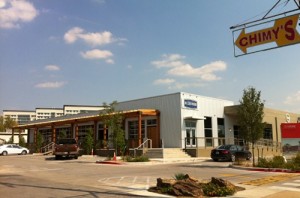If you’ve driven through the respective downtown areas of Dallas and Fort Worth, it was likely an exercise in patience and navigation prowess. The orange cones, the closed streets – an Atheist could be moved to prayer.
According to the Dallas Morning News, the current commercial construction industry is steaming past the good ol’ days of 2008. Consider that more than 20 buildings with almost 6-million square feet of office space is being built throughout North Texas. In its 2nd Quarter report, the CBRE Group, Inc., found that despite a number of completed office projects, the “under construction pipeline hovered around 5 million sq. ft., over the quarter …” And that’s just one area of commercial construction.
The employment numbers are just as impressive. According to CBRE, employment growth continues to be rated as strong. Year-over-year growth (April 2013 – April 2014) throughout Dallas/Fort Worth, showed a 3.5% increase representing 106,800 jobs.
With many economic trends pointing in a positive direction, how might this affect your plan to build?
Labor Shortage
The metropolitan area that includes Fort Worth/Arlington added over 2,600 construction jobs. The Associated General Contractors of America (AGC of America) reports, “Many construction firms looking to expand their payrolls are finding a surprisingly tight labor market.”
We can relate to those findings. After searching locally for an estimator over the last 18 months, we finally moved our search out-of-state. It took just two months to find and hire our new estimator, Jayson Rodriguez from Fresno, California.
Even as construction employment expands in Dallas/Fort Worth, national surveys continue to show that some general contracting firms are turning down work due to a lack of labor.
To ensure we can accept new projects, we have two things in place. First, we are hyper-focused on coordinating with our sub-contractors. The fact is, just about everyone is booked, so gone are the days of calling a sub and asking him/her to be on a job site the next day. Second, we have our own workforce of qualified, hourly workers that can help fill-in any gaps.
Construction Salaries
With demand for construction increasing, the cost of salaries and skilled labor has increased right along with it.
In a national survey conducted by AGC of America, 70% of firms confirmed they are paying more for skilled labor. In some cases, the wage increase is considered “significant.”
Firms who took part in the survey say, the hardest positions to fill right now include: carpenters, project managers, supervisors, estimators, electricians, plumbers and ironworkers.
One example of how higher salaries is affecting the cost of projects is Chevron Phillips Chemical. According to an article in the Star-Telegram, they estimate the ethylene plastics plant they’re preparing to build in San Antonio will now cost $6 billion – that’s $1 billion over the original estimate.
Whether it’s billions or millions, our estimates indicate sub contractor pricing has gone up approximately 5-8% over the last 18 months.
Cost of Materials
Figures released by AGC of America in January 2014, show prices for construction materials and for nonresidential building construction increased more than overall prices for final demand.
In many cases, contractors were able to raise bid prices to match the cost increase in materials, but competition for projects kept margins fairly minimal.
The Bureau of Labor Statistics, released their national producer price index for January 2014:
* Gypsum products jumped 7.4%
* Lumber and Plywood up 2.4%
* Cement increased by 2.0%
* Insulation Materials up 1.5%
Locally, our numbers show much higher price increases. By our estimates, concrete pricing has expanded by more than 10%, with the price skyrocketing from $75/cubic yard to almost $95/cubic yard. In addition, we have seen an increase in costs for gypsum products, lumber and plywood, as well as glass.
Interest Rates
One of the positives of commercial construction is that interest rates for loans remain very low. For the last two years, rates have attenuated and remain very thin.
Mark Cundiff, Senior Vice President of Real Estate at OmniAmerican Bank says, the rates can’t move much lower, so borrowers are asking for, and in some cases getting, longer Interest Only periods on their loans. The other area benefiting borrowers is the request for non-recourse, meaning the borrower is not personally liable for the secured loan.
The competition amongst commercial lenders is steep, so it’s not surprising that more changes are happening to the structure of the loans that lessen the burden on developers. And with evidence of new construction taking place throughout North Texas, banks appear just as confident as their customers.
Willingness to Build
Pace of construction in Dallas/Fort Worth doesn’t seem to be ringing any alarm bells.

The current state of construction is filling a demand, where just three years ago, very little could be seen taking place in the industry. Many analysts see this construction boom as “backfilling” current demand.
Confidence is high amongst, builders, developers and banks. And, the Built-to-Suit business continues to grow along with the North Texas economy. We are encouraged by this positive attitude and plan on retaining our great people to meet the increasing demand for construction services.

